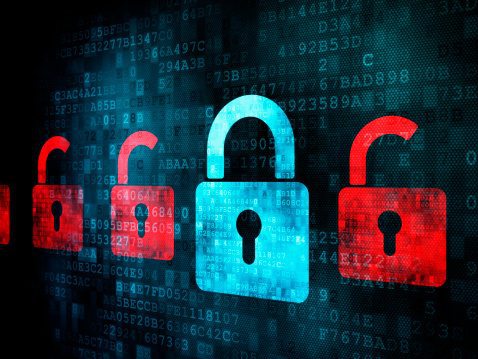
And the risk is growing. Cyber-attacks increased by 24% in the first half of 2012 over the same period in 2011, according to a new report from security firm Symantec. Reason?
“Any time that the economy goes down, white-collar crime goes up,” says Bill McDermott, chief executive officer of Atlanta-based McDermott Financial Solutions. “We’re seeing an increase in corporate account takeovers. It’s a huge problem.”
Target: You
Think fraudsters only go after big corporations? Not so.
“There seems to be a trend toward hackers targeting smaller businesses,” says Brian Krebs, a cyberfraud investigative reporter in suburban Washington, D.C. “Perhaps that’s because larger businesses tend to have protective systems in place so the bad guys have to jump through more hoops.”
The numbers tell the tale: Some 36% of attacks during the first half of 2012 were directed at businesses with 250 or fewer employees, according to Symantec. That’s twice the 18% recorded during the same six-month period in 2011.
“There appears to be a direct correlation between the rise in attacks against smaller businesses and a drop in attacks against larger ones,” says Paul Wood, Symantec’s cybersecurity intelligence manager. “It almost seems attackers are diverting their resources directly from one group to the other.”
Even more troubling, banks commonly refuse to indemnify companies for funds stolen from commercial accounts.
“A lot of people have the misunderstanding that banks offer to business accounts the protection offered to consumers,” McDermott says. “In fact, banks will not hold business account holders harmless for losses from cyberfraud.”
Why won’t banks protect business accounts? One reason is legislative: Only consumers are protected by the Federal Electronic Funds Transfer Act, also known as Regulation E. If the victimized consumer gives timely notice, almost all of the stolen money is reimbursed.
Here’s another reason: Banks expect business owners to perform due diligence.
“In the area of cybersecurity, banks expect businesses to possess a level of expertise higher than that of consumers,” McDermott says. “For example, businesses are expected to maintain protection against ‘malware’ and to train employees to avoid Internet sites where they can pick up viruses.”
A cyber-attack most often begins when a hacker installs a rogue program—called malware—on the computer of a targeted business and captures user names and passwords for the company’s online bank accounts. From there, it’s easy for the hacker to access the account and wire funds to other financial institutions.
Here’s the really bad news: Computers give little indication that they are infected with malware. Programs designed to detect rogue programs often are unable to identify the code written to hack financial data.
“Once on your system, sophisticated malware may keep itself patched faster than your anti-virus software updates itself,” Krebs says. As a result, the only way to really cure a sick computer is to reinstall the operating system.
What to do? Even small businesses without information technology staffs can take basic security steps.
“Make sure your computers have virus protection and the appropriate firewalls,” McDermott says. “From the business practice standpoint, if you send out ACH (Automated Clearing House) transactions, set up a system of dual control so that one person initiates the transaction and a second person approves it before the bank accepts it. And look at accounts on a daily basis to spot unauthorized transactions quickly.”
Some experts suggest dedicating one computer solely to the task of online banking. Keep viruses off the computer by prohibiting its use for email or Web surfing other than bank-related sites.
“Strip down the computer to whatever software you need and nothing else,” Krebs says. “And keep it up-to-date with the latest patches every day; don’t fall behind.”
That last bit of advice, Krebs says, applies to all your computers. Hackers constantly write new programs that exploit vulnerabilities in software, such as the Windows operating system, Java and the Adobe Acrobat reader of PDF files.
One final thing: Install the most up-to-date computer operating system because each iteration provides better security.
“According to recent reports, 43% of the market is still on Windows XP,” says Stephen Sims, senior instructor at SANS Institute, a security training organization based in Bethesda, Md. “We all have to move off these outdated operating systems to take advantage of the much better security features of modern releases.”
Good habits
Modern operating systems, with their native security features, can do only so much. Employees must be trained on good computer habits. Here are some of the best :
- Avoid email attachments. “Three out of four malware attacks come from emails with links that are clicked on by recipients,” Krebs says. “If the browser is not fully patched, one click can do it: The computer is infected and there is no warning.”
- Surf safely. Undisciplined surfing also can be dangerous. “Visit certain Web pages with a browser that is not fully patched and you can get infected by code in an ad banner or elsewhere on the page,” Krebs says.
- Bank securely. When visiting your bank’s website, use a bookmark that points to the institution’s secure “https” page. In other words, go directly to “https://www.bankname.com.” In contrast, going to “www.bankname.com” can allow attackers to exploit your unencrypted connection, making your data easier to capture.
- Review bank statements. Monitor your monthly bank statement closely for unexplained financial activity. “Many attacks involve scraping small amounts from many accounts versus large amounts from a few accounts,” Sims says.
- Go offline. When you’re finished with a computer for the day, shut it down completely rather than putting it in sleep mode. “While a computer is in sleep mode the encryption keys used for anything from Web sessions to hard-disk encryption are likely to be resident in memory,” Sims says. “An attacker can use special tools to dump the memory from a system that is not completely shut down and potentially steal this information to gain unauthorized access.”
Strong passwords
Security experts have long championed the virtues of strong passwords. A mix of letters and numbers is much safer than using an easily guessed word such as “qwerty” or even “password.” Too often, though, employees don’t get the message. They frequently complain about the difficulty of remembering complicated strings of characters.
Help is at hand. It’s not really necessary to commit passwords to memory.
“There is a lot of good software to help you manage your passwords,” says Michael Spadaro, president of Help with a Smile, a New York City-based technology support firm serving small businesses. “One of my favorites is LastPass. But you also could use something as simple as keeping your passwords in a notebook locked in your desk.”
Be careful how you distribute passwords to employees, Spadaro adds. Giving the same password to everyone carries a downside: Every time an employee leaves the company you have to change the password used by everyone who remains.
“Many banks will allow multiple logins, so assign different passwords to different users,” he says. “Then you can disable a departing person’s password without disabling everyone’s.”
Vet your bank
Businesses are not always to blame when cyberfraud hits. Sometimes banks drop the ball. There is some motivation for financial institutions to maintain a minimal level of security: Good internal practices are encouraged by government agencies charged with overseeing bank activities.
“The bright side of enforcement is that financial institutions are having to architect and deploy solutions that hopefully increase the security of customer accounts,” Sims says.
Even so, you will want to subject your bank to some due diligence.
“Perform risk assessments when evaluating potential banks,” Sims says. “Draft a list of questions with your biggest concerns and run them by each organization.”
How good is the bank’s Internet defenses? How do the bank’s practices—and the security features it offers business accounts—compare with other institutions? For example, does it offer a two-step validation, in which an Automated Clearing House transfer must be approved by a second representative at your office? There are other forms of what is called “multifactor authentication,” in which the bank must receive a back-up confirmation from your business—in the form of a phone call or email—before honoring a wire transfer.
Sims suggests researching each prospective bank using publicly available tools such as Google, the U.S. Securities and Exchange Commission, Dun & Bradstreet and others.
“Analyze each bank’s stock performance if publicly traded,” he says. “Read through some of the comments in public message boards. Hint: Many of the posters are employees.”
Sims advises companies to visit websites such as Darkreading.com to see if there are any reports regarding incidents at your prospective bank. Use specially crafted Google searches to find breaches. For example, try using: intitle: “bank name” intext: hackers or breach.
Big bank or small bank: Which is better? Each has its benefits. While all financial institutions are required to abide by federal regulations, larger banks may have more security resources and experience. Smaller banks, however, may have fewer accounts to monitor and give each one more attention.
Since no banks of any size indemnify business accounts, you may want to look into getting your own coverage. Ask your broker for information about fraud insurance that has a rider for fraudulent bank transfers.
When hackers strike

“Fraudulent transactions frequently are reversed, so most victims get some money back,” Krebs says.
The secret to recovering your cash? Act fast.
“Time is your enemy,” Krebs says. “The longer the time that elapses after a breach, the more money you are likely to lose.”
Don’t wait until the last minute to figure out whom to call in the event of a money. Put together a list of vital financial and legal contacts and keep it handy.
Quick action on your part, though, must be matched by your financial institution.
“You have to have a cooperative bank that pulls things together quickly,” Krebs says. Once your funds have been withdrawn as cash—often at overseas money transfer offices—they are gone for good.
How safe is your bank account?
How secure are the funds in your commercial bank account? Find out by taking this quiz. Score 10 points for every “yes.” You’re in good shape if your total score is 80 to 100, vulnerable if 60 or 70, and courting disaster if below 60.
Are you:
| Using the latest operating system with an active firewall? | Y/N |
| Using a capable anti-virus and malware program? | Y/N |
| Utilizing automatic updates for the operating system, anti-virus and malware programs? | Y/N |
| Taking advantage of security programs offered to business accounts by your bank? | Y/N |
| Checking bank account transactions daily? | Y/N |
| Isolating the financial transaction computer from other activities? | Y/N |
| Training your employees on handling email attachments? | Y/N |
| Restricting staff access to questionable websites offering gambling and pornography? | Y/N |
| Using strong passwords? | Y/N |
| Maintaining a quick-response plan with names and numbers of people to contact in the event of a fraudulent wire transfer? |
Y/N |




